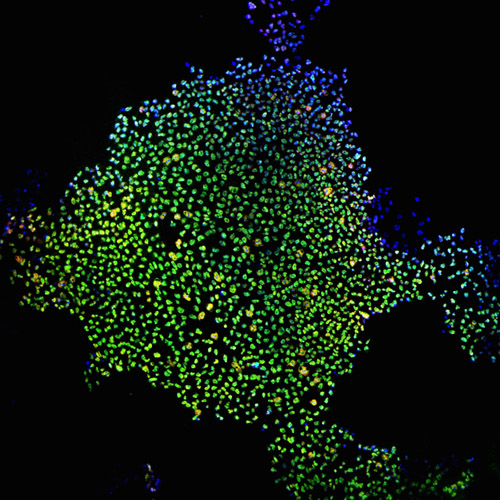Weeding out problem stem cells for safer therapy
September 28, 2012
Mayo Clinic researchers have found a way to detect and eliminate potentially troublemaking stem cells to make stem cell therapy safer.
Induced Pluripotent Stem cells, also known as iPS cells, are bioengineered from adult tissues to have properties of embryonic stem cells, which have the unlimited capacity to differentiate and grow into any desired types of cells, such as skin, brain, lung and heart cells.
However, during the differentiation process, some residual pluripotent or embryonic-like cells may remain and cause them to grow into tumors.
“Pluripotent stem cells show great promise in the field of regenerative medicine; however, the risk of uncontrolled cell growth will continue to prevent their use as a therapeutic treatment,” says Timothy Nelson, Ph.D., M.D., lead author on the study, which appears in the October issue of STEM CELLS Translational Medicine.
Using mouse models, Mayo scientists overcame this drawback by pretreated stem cells with a chemotherapeutic agent that selectively damages the DNA of the stem cells, efficiently killing the tumor-forming cells. The contaminated cells died off, and the chemotherapy didn’t affect the healthy cells, Dr. Nelson says.
“The goal of creating new therapies is twofold: to improve disease outcome with stem cell-based regenerative medicine while also ensuring safety. This research outlines a strategy to make stem cell therapies safer for our patients while preserving their therapeutic efficacy, thereby removing a barrier to translation of these treatments to the clinic,” says co-author Alyson Smith, Ph.D.
Stem cell therapies continue to be refined and improved. Researchers are finding that stem cells may be more versatile than originally thought, which means they may be able to treat a wider variety of diseases, injuries and congenital anomalies. Stem cell therapy is an emerging regenerative strategy being studied at Mayo Clinic.
“By harnessing the potential of regenerative medicine, we’ll be able to provide more definitive solutions to patients,” says Andre Terzic, M.D., Ph.D., co-author and director of Mayo Clinic’s Center for Regenerative Medicine.
